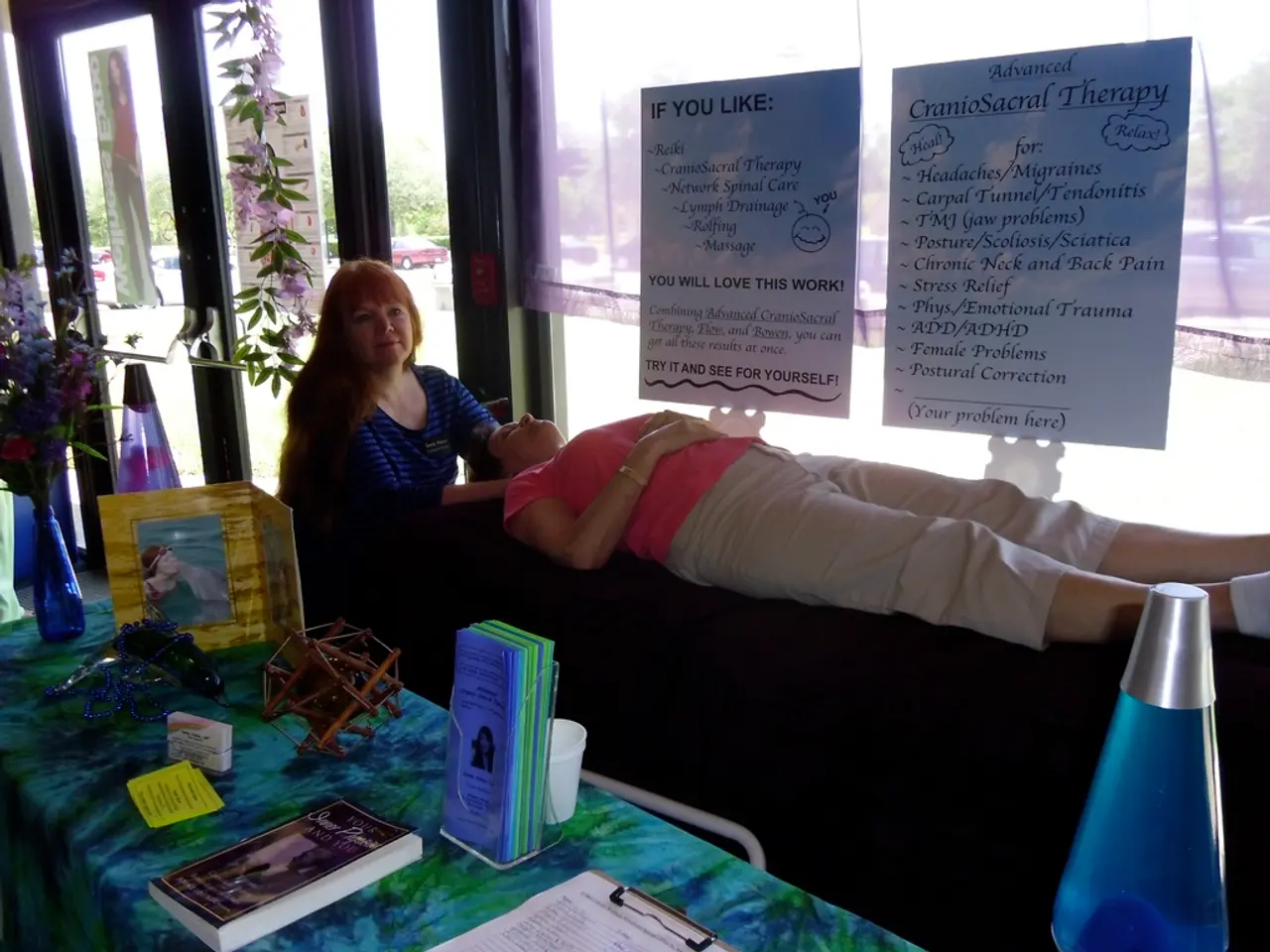Arthritis Relief through Massage: An Overview of Various Techniques, Advantages, and Outcomes
Arthritis can be a challenging condition to manage, but massage therapy offers a natural and effective way to alleviate its symptoms. The Arthritis Foundation recommends massage as a complementary therapy for arthritis patients, as it can help reduce pain, increase blood flow to joints, improve range of motion, and boost mood [1][2].
Benefits of Massage for Arthritis
- Pain reduction: Swedish massage has been shown to reduce pain and the need for pain medication in rheumatoid arthritis patients by relaxing muscles and improving circulation [1][2].
- Reduced joint stiffness: Gentle manipulation helps decrease stiffness and discomfort in arthritic joints, improving range of motion [2].
- Improved blood flow and lymphatic drainage: Massage enhances circulation, which helps reduce swelling and inflammation [2][3][5].
- Enhanced mobility and flexibility: Massage stretches connective tissues and eases muscle tightness, aiding in joint function and physical activity [3][5].
- Emotional well-being: Massage boosts the release of serotonin and dopamine, reducing stress, anxiety, and improving mood [1][3][5].
Types of Massage for Arthritis
Several massage techniques are effective for arthritis treatment. These include:
- Swedish massage: Uses gentle pressure to increase blood flow and reduce pain without aggravating inflammation; effective for rheumatoid arthritis pain management [1][4].
- Deep tissue massage: Targets deeper muscle layers to break down chronic tension and improve movement but must be used cautiously in inflamed areas [4].
- Lymphatic drainage massage: Utilizes light rhythmic strokes to promote lymph flow and reduce swelling, which can ease arthritis-related inflammation [4].
- Myofascial release: Focuses on easing tension in connective tissues around joints, helping reduce inflammatory triggers and improving flexibility [4].
- Craniosacral therapy: A light-touch technique regulating the nervous system and inflammatory responses [4].
Other techniques, such as Shiatsu, originating from Japan, can also be beneficial, as they use rhythmic pressure on specific body points to restore the flow of healthy energy (qi) [4].
Maximizing Benefits from a Massage Session
To get the most out of a massage session, it's essential to communicate clearly with your therapist about your arthritis type, pain levels, and sensitive areas. Regular sessions support ongoing relief and functional improvement, especially when combined with other therapies like physical or occupational therapy [2][5].
During flare-ups, opt for milder massage methods to avoid aggravating inflammation. After the session, remember to drink water to aid detoxification and allow time for relaxation and recovery. Integrating massage with exercise, proper medication, and lifestyle modifications creates a holistic approach to managing arthritis [2][5].
Safety Considerations
Before a massage session, inform your therapist about any joint damage, current injuries, rashes, cuts, or bruises to ensure special care is taken during the treatment [6].
In the case of hot stone massage, care must be taken to avoid burns or scalds. Always ensure that the stones used are at a comfortable temperature and that the therapist is experienced in this technique [7].
Myofascial release tools can be bought for at-home use, allowing self-massage to provide additional relief [8]. However, it's crucial to use these tools carefully, following the manufacturer's instructions and seeking guidance from a professional if needed.
In conclusion, massage therapy offers a valuable addition to arthritis treatment, helping to reduce pain, stiffness, and inflammation while enhancing mobility and emotional well-being. Tailoring massage approaches and maintaining regular sessions can maximize these benefits [1][2][3][4][5].
- Massage therapy, as a complementary treatment, can provide contextual relief for chronic disease patients, particularly those suffering from arthritis, by reducing muscle pain and improving mental health.
- Alongside conventional medical-conditions treatments, health-and-wellness strategies like massage therapy can offer holistic solutions for arthritis management, supporting health and alleviating chronic symptoms.
- Aside from Swedish massage, techniques such as deep tissue massage, lymphatic drainage massage, myofascial release, craniosacral therapy, and even Shiatsu can serve therapeutic purposes, minimizing pain and promoting recovery.
- Incorporating preventive measures like regular communication with the therapist, gentle techniques during flare-ups, and self-care practices like drinking water post-session can boost the efficacy of massage therapy.
- Research has shown that CBD may have anti-inflammatory properties and can potentially be utilised alongside traditional arthritis treatments and massage therapy to manage symptoms more effectively.
- Modern science continues to explore the benefits of various treatments, including massage therapy and emerging alternative options like CBD, for managing arthritis, mental-health conditions, and other health-related concerns.




